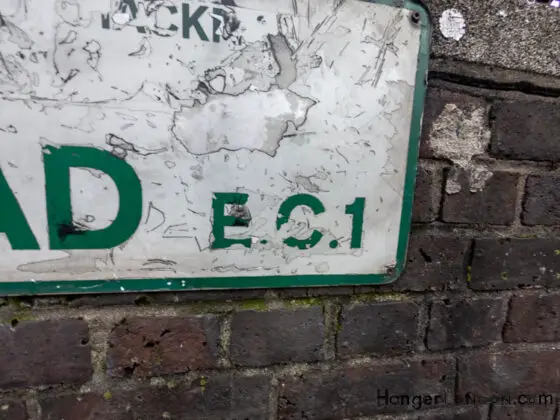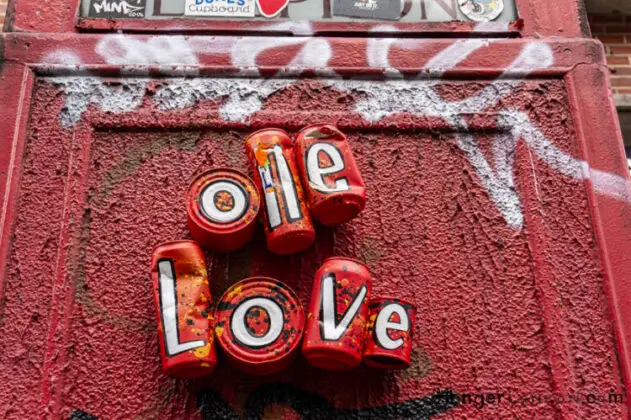Graffiti has always been an integral part of urban culture, and the EC1 area in Old Street is no exception. The area is known for its diverse range of graffiti, from bold murals to intricate street art pieces. However, the history of graffiti in EC1 goes back much further than you might think.
The beginning of Street Art and Graffiti scene in London
During the 1960s, the London underground scene was rife with graffiti. As hip hop and punk cultures emerged in the 1970s and 1980s, graffiti began to evolve into a true art form. The emergence of aerosol cans as an artistic tool enabled artists to create larger and more intricate pieces.
Today, EC1 is home to some of the most vibrant and innovative graffiti in London. From the famous artist Banksy to local street art collectives, the area boasts a diverse range of styles and techniques.
Discovering the Best Graffiti Hotspots in Old Street
If you’re looking to explore the best graffiti hotspots in Old Street, EC1 is the place to be. From the iconic wall murals on Rivington Street to the vibrant street art in Shoreditch, the area is full of hidden gems waiting to be discovered.
One of the best places to start your graffiti adventure is Great Eastern Street. Here, you’ll find a stunning range of street art and murals, including works by famous artists like ROA and Phlegm.
If you’re looking for something a little more off the beaten path, head over to Curtain Road. This street is home to some of the most innovative and experimental graffiti in the area, including works by local collectives like the Lost Souls.
Old Street: From Street Art to Political Messages: The Diversity of Graffiti in EC1
One of the most fascinating aspects of graffiti in EC1 is the incredible diversity of styles and messages on display. From bold political statements to beautiful abstract designs, the area truly has it all.
One of the most iconic examples of political graffiti in EC1 is the Banksy piece on Rivington Street. This piece features a young boy standing on a ladder, painting over a CCTV camera. It’s a powerful commentary on the surveillance state and the erosion of privacy.
On the other end of the spectrum, you’ll find beautiful and intricate abstract pieces like the ones by D*Face on Sclater Street. These pieces are a celebration of color, shape, and form, and they demonstrate the incredible technical skill of the artists behind them.
The Impact of Graffiti on the Local Community in Old Street
Graffiti has always been a controversial topic, and Old Street is no exception. While some see it as a form of artistic expression, others view it as vandalism and a blight on the community.
However, many residents and business owners in the area have come to embrace graffiti as a unique and vibrant aspect of urban culture. Some businesses have even commissioned artists to create murals and street art pieces on their buildings.
One example of this is the Village Underground, a creative hub on Holywell Lane. The building is covered in colourful murals and street art, which have become a defining feature of the local community.
Who are the Artists Behind the Street Art in Old Street / EC1
Behind every stunning piece of graffiti in EC1 is an incredibly talented and passionate artist. These artists come from all walks of life, but they share a common love for the medium and a desire to make their mark on the urban landscape.
One of the most famous artists in the area is Stik,
Stik is a well-known London street artist, known for his distinctive stick figure characters that can be found all over the city. His work is particularly prevalent in Old Street, where he has created several iconic pieces. One of his most famous pieces is the mural on the Village Underground building, which features a group of his stick figures gathered around a tree. The piece has become a beloved symbol of the Old Street community, and it’s a popular spot for photos.
Stik’s work is particularly well-suited to the urban landscape of Old Street. His stick figures are simple but expressive, and they have a universal appeal that resonates with people from all walks of life. Stik often uses his art to make political statements, and his work can be seen as a commentary on the social issues that affect people living in cities like London. His murals are a reminder that even in the midst of a busy urban environment, there is still room for beauty and creativity.
One of the reasons that Stik’s work has become so popular in Old Street is that it reflects the community’s values of diversity and inclusivity. His art celebrates the humanity of all people, regardless of their background or social status. In a rapidly changing neighbourhood like Old Street, where gentrification and development are pushing out longtime residents, Stik’s art is a powerful reminder of the community’s shared humanity.


Stik’s work has also become an important part of Old Street’s cultural identity. His pieces have become landmarks in the neighbourhood, and they serve as a point of pride for local residents. Stik’s art is a reminder that the streets of London are a canvas for creative expression, and that even the most humble stick figure can have a profound impact on the community. For those who live and work in Old Street, Stik’s art is a beloved part of the neighbourhoods history and a symbol of its vibrant cultural life.
Zabou, a French street artist
Zabou is a French-born street artist who has become a fixture in the Old Street neighborhood of London. Her work is known for its vibrant colors, intricate details, and powerful messages. Zabou has created several murals in Old Street that have become iconic parts of the neighborhood’s landscape. One of her most famous pieces is the mural on the side of the Old Street Records building, which features a woman with a megaphone and the words “Speak Up” in bold letters. The piece is a powerful statement about the importance of using one’s voice to effect change in the world.
Zabou’s work is particularly well-suited to the urban environment of Old Street. Her murals are often large-scale and eye-catching, and they have a way of drawing people’s attention to the issues that matter most. Zabou’s art is a reminder that even in the midst of a busy city, there is still room for creativity and self-expression. Her work celebrates the diversity and vitality of the Old Street community, and it reminds us that art can be a powerful force for change.
One of the reasons that Zabou’s work has become so popular in Old Street is that it reflects the neighborhood’s values of inclusion and social justice. Many of her murals address important issues like feminism, LGBTQ+ rights, and climate change. Zabou’s art is a call to action for people to think critically about the world around them and to work together to create a more just and equitable society. For those who live and work in Old Street, Zabou’s art is a source of inspiration and a reminder that they have the power to effect change in their own community.
Zabou’s work has also become an important part of Old Street’s cultural identity. Her murals are a testament to the neighbourhoods vibrant creative scene, and they serve as a symbol of its unique character. Zabou’s art is a reminder that the streets of London are a canvas for self-expression, and that even the most humble mural can have a profound impact on the community. For those who call Old Street home, Zabou’s art is a beloved part of the neighbourhoods landscape and a testament to its rich cultural heritage. The artists home page can be found here.
Old Street: Preserving Graffiti as a Form of Cultural Expression in Old Street
As Old Street continues to develop and change, there is a growing concern about preserving the area’s unique graffiti culture. Many worry that new development projects will erase the vibrant and diverse graffiti that has become such a defining feature of the community.
However, there are efforts underway to protect and celebrate the area’s graffiti heritage. The local council has commissioned several street art projects, and there are plans to create a graffiti walk that will guide visitors through the best pieces in the area.
Additionally, some buildings and businesses have taken steps to protect the graffiti on their walls. The Nomadic Community Garden, for example, is a community space in Shoreditch that has become a haven for street artists. The owners of the property have made a commitment to preserving the art on their walls, and they even host regular street art events.
Closing Thoughts
Graffiti has a long and rich history in EC1, and the area continues to be a hub of innovation and creativity. From political statements to abstract designs, the graffiti in Old Street is a reflection of the community’s diversity and passion.
While there are concerns about preserving the area’s graffiti culture in the face of development and gentrification, there are also efforts underway to protect and celebrate this unique aspect of urban life.
Whether you’re a longtime resident of EC1 or a visitor looking to explore the area’s vibrant culture, there’s no doubt that the graffiti in Old Street is worth taking the time to appreciate and enjoy.





